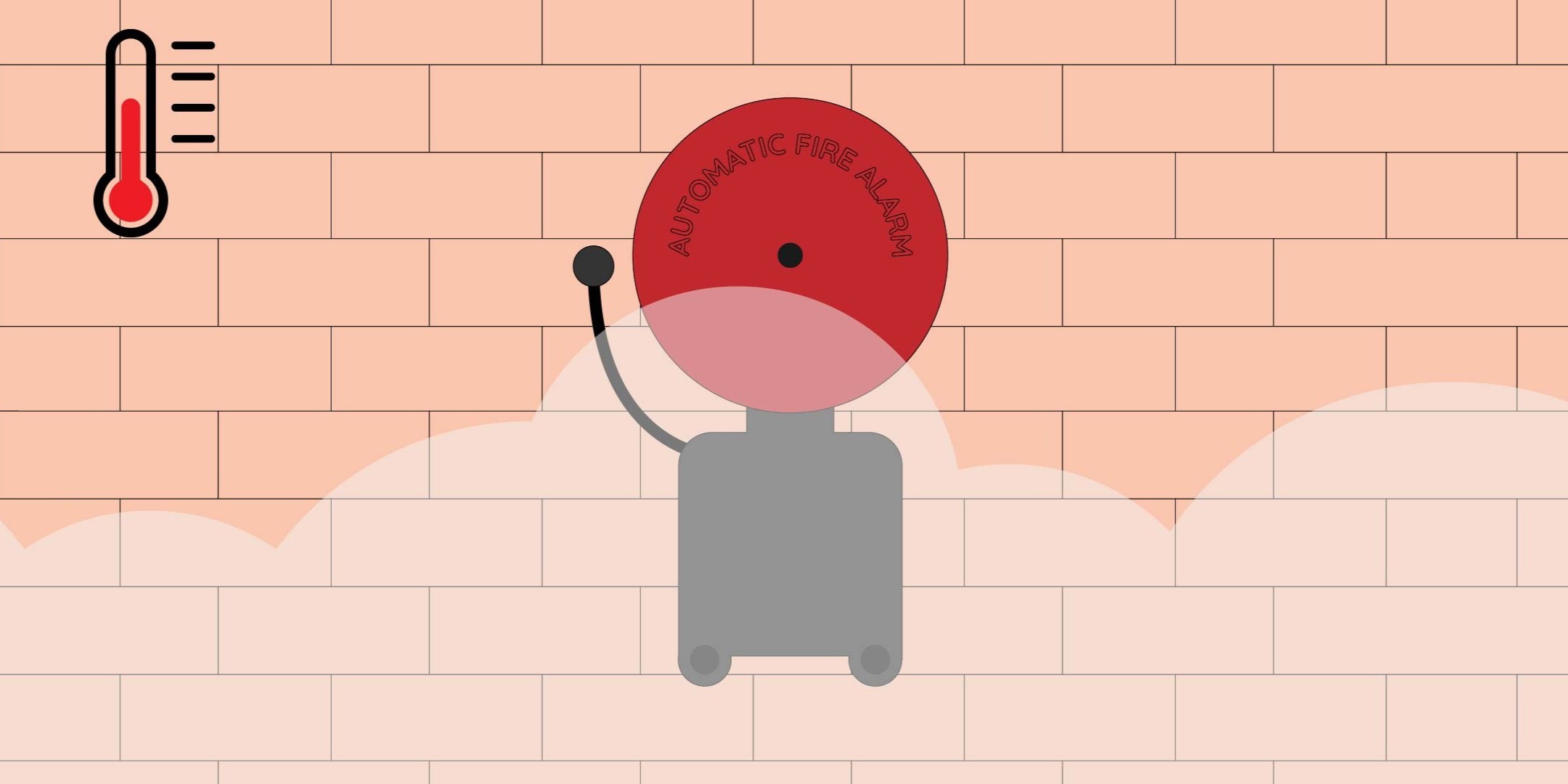The History of Fire Alarm Systems

Not so long ago, society was poorly defended against urban catastrophes. Specifically, fires, which broke out quite frequently, resulting in property damage and even death. The only way to prevent serious consequences from fires was to hope that a person, family, or neighborhood would be alert enough to notice a house catch fire and shout loudly for help in time. Unfortunately, it was often too late. Fires spread fast, and firefighting wasn't exactly organized, even though the practice has been around since ancient Roman times.
FIRE WATCHES

Eventually, fire watches, also known as watchmen, emerged to greatly improve timely detection of fires. This eased concerns about public safety and saved a lot of families and their property from tragic loss. Still, the fire detection process was subject to the human factor, as the entire mechanism depended on watchmen who sometimes fell asleep on the job.
THE TELEGRAPH MAKES IT POSSIBLE

The situation changed rapidly in 19th century after the telegraph was invented by Samuel Morse. Building on this communication system, Dr. William F. Channing and Moses G. Farmer, both from Boston, made the first non-human fire detection system. In 1852, the two scholars unveiled their “Fire Alarm Telegraph,” commonly known as a "fire box telegraph," providing the public a way to summon the fire department in a fast, efficient manner.
The system consisted of three box circuits, three bell circuits, forty boxes, sixteen alarm bells, and a crude central office apparatus. Installed in buildings with serious fire hazards, this invention was a monumental move toward the improvement of local and city-wide safety procedures. After refining their product, the patent for Channing and Farmer’s “Electromagnetic Fire Alarm Telegraph” was issued on May 19th, 1857.
A NEW ELECTRICAL “WATCHMAN”

The next step in fire alarm system development was taken by Francis Robbins Upton, an American physicist and mathematician, and also a former associate of Thomas Edison. In 1890 he invented and patented the very first automatic fire alarm. The system activates when a thermostatic coil detects rising temperatures due to smoke or fire. Once an abnormal temperature is reached, a closed circuit is created with a magnet, and a bell is rung to alert people.
In his application for a patent, granted in 1890, the inventor stated, “our object is to produce an alarm complete in itself, simple in construction without complicated circuits and which shall not require constant attention.” It was not long before people recognized the importance of this fire alarm. It became widely used, especially in cities and large towns where fire departments needed to respond to fires quickly and could not simply rely on the community to be vigilant.
NO SMOKING INDOORS ANYMORE

The turn of the 20th century saw the invention of other detection devices—the smoke detector and carbon monoxide detector—that would eventually comprise essential components of modern fire alarm systems.
Fast forward to the 1930s now, when Swiss physicist Walter Jaeger was working with poisonous gases such as carbon monoxide and wished to invent a sensor for such toxic gases. Driven by personal loss, Walter was determined to prevent tragedies like the one in his hometown of Wengen, where a private laboratory and a gas accident claimed the life of his close childhood friend.
Building a prototype, Jaeger expected that gas would enter its sensor, bind the ionized air molecules and in turn alter the electric current in the circuit, making a noise. Unfortunately, Jaeger’s invention failed to do so, as only a small concentration of gas could enter the device and hardly affected the sensor’s conductivity. At this moment, Jaeger was justifiably frustrated and lit himself a cigarette.
As he puffed away on his cigarette, rethinking his idea and reworking the prototype, something unexpected and wonderful happened. The smoke of the cigarette entered the sensor, shifted the electric current, and set off the alarm. While he intended the poison gas to accomplish this and failed, he unintentionally succeeded in creating an instrument that warned against burnt toast and cigarettes. And thus, the first smoke detector was born!
WHAT ABOUT MODERN FIRE ALARMS?

While the technology existed over a hundred years ago, the devices were often too expensive to produce, or too large for viable use in a home or business. It required significant improvements in manufacturing and fire detection technology before fire alarm systems took on the modern forms available today.
1955 marked a big step forward when the first compact, functional heat detectors made their debut in homes. A decade later in 1965, cost-effective, battery-powered smoke detectors were developed by Duane Pearsall and Stanley Peterson. And, by 1975 those smoke-sensing devices were being mass-produced for consumer use. Battery-powered carbon monoxide detectors were developed en masse in the early 1990s, and the first combination smoke/carbon monoxide detectors hit the market in 1996. For the first time in history, both businesses and homes were able to locally alert occupants to a fire while simultaneously sending the signal to a monitored control panel.
The first truly modern fire alarms were developed in the 21st century. These fire alarms work without wires and use a range of different types of modern technologies such as cellular transmitters, private radio systems and digital communicator systems. This modern technology allows the fire alarm signal to be transmitted to the nearest fire department in a matter of seconds so that a fire fighting team can be dispatched.





